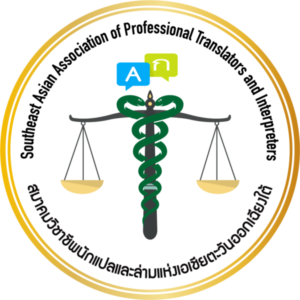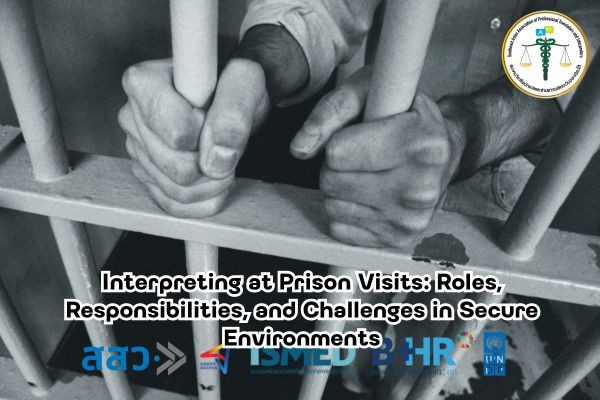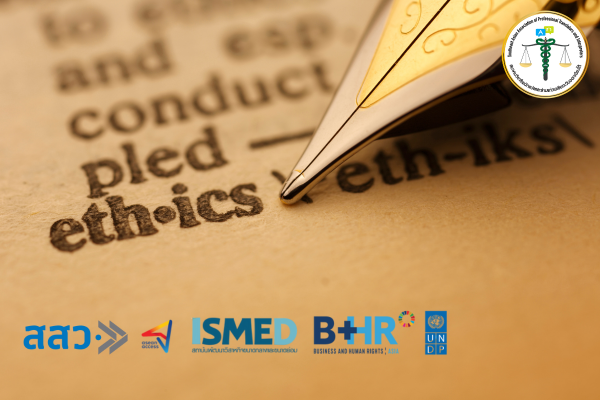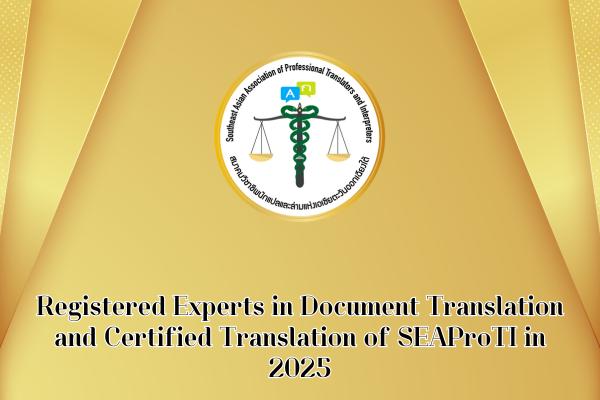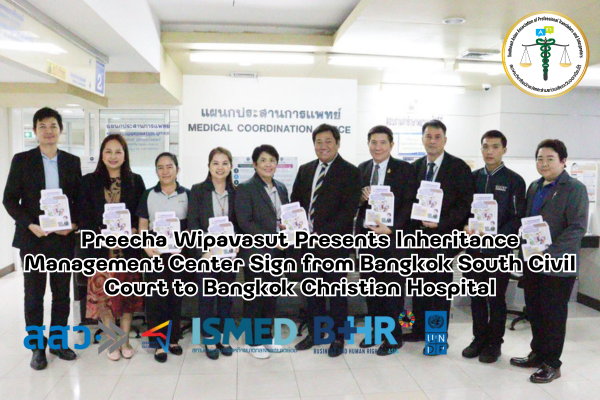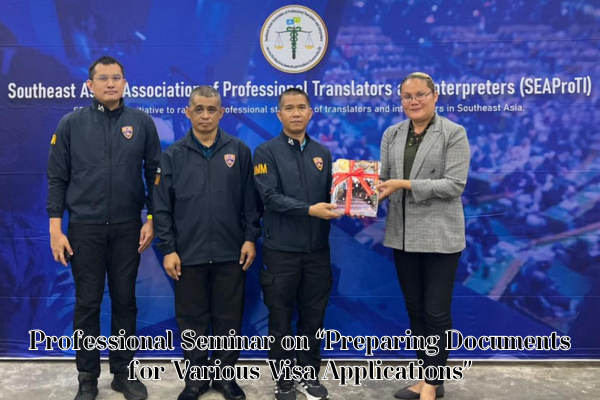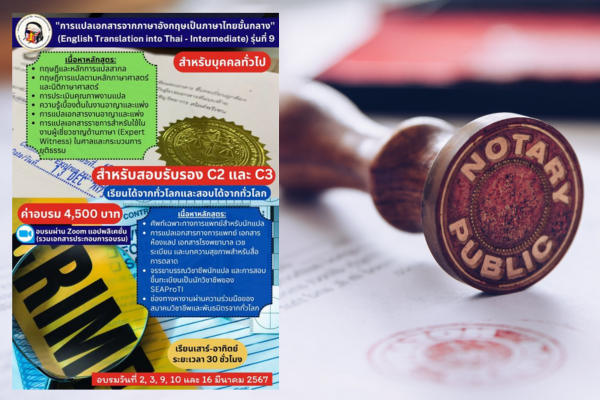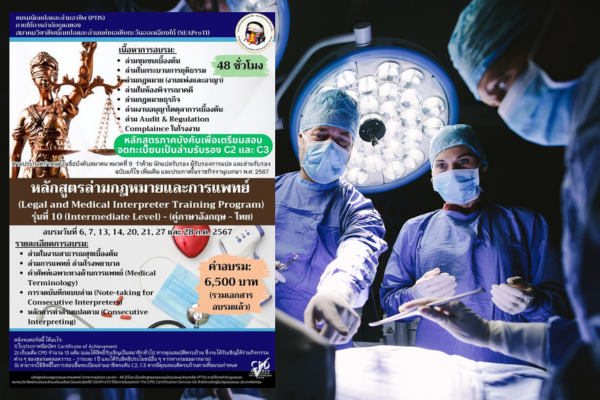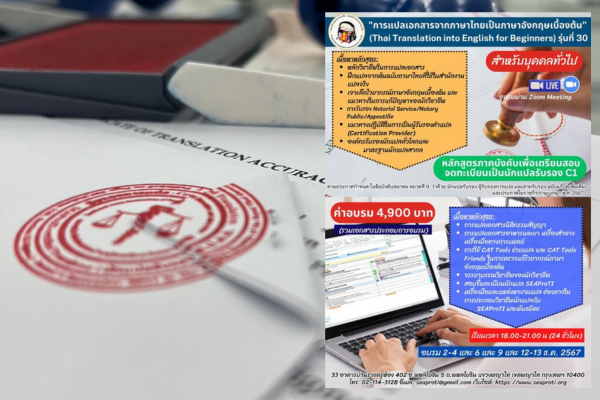Interpreting at Prison Visits: Roles, Responsibilities, and Challenges in Secure Environments
25 April 2025, Bangkok – The role of interpreters in prison settings is often overlooked in the professional interpreting community, yet it is crucial. Interpreting in prisons is not only a linguistic task but a human rights service. Even behind bars, individuals can communicate freely and effectively, especially when it involves their legal rights, medical needs, or family relationships.
This article introduces readers to the types of prisons, the process of accessing such facilities, what interpreters do inside, and the professional and ethical challenges unique to this environment.
1. Types of Prisons and Their Impact on Interpreters’ Work
Not all correctional facilities operate the same way. Prisons are classified by their security level, each affecting the interpreter’s access and work environment:
- High-Security Prisons: These facilities have strict controls such as body and item searches, limited movement, and constant supervision. Interpreting may be conducted via glass partitions or in interrogation rooms.
- Medium and Low-Security Prisons: These settings may offer more flexibility, allowing face-to-face interpreting in designated visit areas.
- Special Detention Centers (e.g., immigration detention): Though not technically prisons, these operate with similar security protocols and often involve interpreters during deportation or immigration procedures.
Understanding the type of facility is essential, as it directly influences session duration, communication mode, and interpreter safety.
2. Accessing the Prison: Procedures and Precautions
Entering a prison to carry out interpreting work involves multiple layers of authorization and security, including:
- Pre-registration with correctional authorities, often initiated by a lawyer or institution
- Identity and professional credential verification
- Thorough security checks, which may include searches and restrictions on bringing in electronic devices or notebooks
- Adherence to facility-specific protocols, which can vary by jurisdiction
Interpreters must be well-prepared—not only with documents, but also emotionally—since the prison environment can be tense, intimidating, and emotionally charged.
3. What Interpreters Do Inside: More Than Just Translating Words
Interpreters in prison settings perform a wide range of tasks, including:
- Legal Interpreting: Facilitating communication between detainees and their legal representatives. Confidentiality and neutrality are paramount.
- Family Visit Interpreting: These assignments require emotional sensitivity, as family members may be distressed or overwhelmed.
- Medical or Mental Health Interpreting: These require domain-specific terminology and additional ethical vigilance, especially when dealing with vulnerable detainees.
- Translation of Official Documents: This may include interpreting arrest warrants, court orders, or rights information for inmates who do not understand the local language.
In each case, the interpreter plays a critical role in ensuring the detainee’s voice is heard and understood.
4. Key Challenges: Ethics, Security, and Emotional Resilience
Interpreters face several challenges when working in correctional facilities, such as:
- Pressure from Authorities: Interpreters may face subtle or overt pressure to “lean” toward one side or alter their delivery, especially in legal contexts.
- Emotional Volatility: Detainees may be stressed, traumatized, or hostile. Interpreters need to remain calm and focused despite emotional intensity.
- Time and Space Constraints: Sessions are often limited in time, with restricted space, and may involve interpreting through a telephone or a glass window.
- Ethical Dilemmas and Confidentiality: Interpreters must uphold strict confidentiality and avoid any behavior that could compromise safety or legal integrity.
Maintaining neutrality and emotional balance is essential, especially in situations involving conflicting interests or vulnerable individuals.
Conclusion: Upholding the Right to Be Understood
Interpreting in prisons goes beyond language—it is a form of advocacy and access. Interpreters serve as bridges between inmates and the outside world, ensuring that legal rights, healthcare access, and human dignity are preserved, even in detention.
Promoting awareness and training in prison interpreting is not only vital for enhancing the profession but also for ensuring a justice system that is inclusive and truly accessible for all.
SEAProTI’s certified translators, translation certification providers, and certified interpreters:
The Southeast Asian Association of Professional Translators and Interpreters (SEAProTI) has officially announced the criteria and qualifications for individuals to register as “Certified Translators,” “Translation Certification Providers,” and “Certified Interpreters” under the association’s regulations. These guidelines are detailed in Sections 9 and 10 of the Royal Thai Government Gazette, issued by the Secretariat of the Cabinet under the Office of the Prime Minister of the Kingdom of Thailand, dated July 25, 2024, Volume 141, Part 66 Ng, Page 100.
To read the full publication, visit: the Royal Thai Government Gazette
การล่ามในการเยี่ยมผู้ต้องขัง: บทบาท หน้าที่ และความท้าทายในสถานที่ควบคุมความมั่นคง
โดยทั่วไปแล้ว “การล่ามในเรือนจำ” อาจเป็นบทบาทที่ไม่ค่อยมีผู้รู้จักหรือกล่าวถึงมากนักในวงวิชาชีพล่าม แต่แท้จริงแล้ว การล่ามในเรือนจำถือเป็นงานที่มีความสำคัญสูง เป็นส่วนหนึ่งของกระบวนการยุติธรรม และสะท้อนหลักการสิทธิมนุษยชนที่ว่า “ทุกคนควรได้รับสิทธิในการสื่อสารอย่างเสรี แม้อยู่ภายใต้การควบคุมของรัฐ”
บทความนี้จะพาผู้อ่านไปรู้จักกับประเภทของเรือนจำ วิธีการเข้าถึงของล่าม หน้าที่ที่ล่ามต้องปฏิบัติในบริบทของเรือนจำ และประเด็นท้าทายที่ล่ามต้องเตรียมรับมือ
1. ประเภทของเรือนจำ และความแตกต่างที่ส่งผลต่อการทำงานของล่าม
เรือนจำไม่ได้มีลักษณะเดียวกันทั้งหมด แต่แบ่งออกตามระดับความปลอดภัย ได้แก่:
- เรือนจำความมั่นคงสูง (High-Security Prisons): ใช้มาตรการควบคุมเข้มงวด เช่น การตรวจค้นร่างกายและสิ่งของทุกครั้งก่อนเข้า มีเจ้าหน้าที่ดูแลอย่างใกล้ชิด การล่ามมักกระทำผ่านห้องกระจกหรือห้องสอบสวน
- เรือนจำความมั่นคงปานกลาง/ต่ำ (Medium/Low-Security Prisons): มีความยืดหยุ่นมากขึ้นในแง่ของการพบปะผู้ต้องขัง อาจอนุญาตให้ล่ามเข้าพื้นที่เยี่ยมได้โดยตรง
- สถานกักกันพิเศษ เช่น ศูนย์กักตัวของสำนักงานตรวจคนเข้าเมือง: มีลักษณะคล้ายเรือนจำแต่มีวัตถุประสงค์เฉพาะ เช่น การกักตัวก่อนส่งกลับประเทศ
ระดับของเรือนจำมีผลต่อระเบียบการเข้าออก ระยะเวลาที่อนุญาตให้ล่ามทำงาน และรูปแบบการสื่อสารที่ใช้
2. การเข้าถึงเรือนจำ: ขั้นตอนและข้อพึงระวังสำหรับล่าม
การเข้าไปในเรือนจำเพื่อปฏิบัติงานในฐานะล่ามต้องผ่านขั้นตอนที่เคร่งครัด ซึ่งอาจรวมถึง:
- การลงทะเบียนล่วงหน้ากับหน่วยงานราชทัณฑ์ หรือผ่านทนายความผู้ขอให้มีการล่าม
- การตรวจสอบเอกสารยืนยันตัวตนและใบรับรองวิชาชีพ
- การตรวจค้นสิ่งของส่วนตัวอย่างละเอียด
- บางแห่งอาจจำกัดไม่ให้พกพาอุปกรณ์อิเล็กทรอนิกส์ เช่น โทรศัพท์ หรือสมุดจด
ล่ามควรเตรียมตัวให้พร้อม ทั้งในด้านเอกสารและจิตใจ เนื่องจากบรรยากาศในเรือนจำอาจกดดันหรือไม่เอื้ออำนวยต่อการสื่อสารแบบเปิดเผย
3. บทบาทของล่ามในเรือนจำ: ไม่ใช่แค่แปลภาษา แต่คือการเชื่อมโยงความเข้าใจ
ล่ามในเรือนจำอาจต้องปฏิบัติงานหลากหลายรูปแบบ เช่น:
- การล่ามระหว่างทนายกับลูกความ: เป็นบทบาทสำคัญที่ต้องรักษาความลับและความเป็นกลาง
- การล่ามในการเยี่ยมญาติ: เป็นงานที่อ่อนไหวทางอารมณ์ ล่ามควรมีทักษะด้านความเข้าใจเชิงวัฒนธรรมและความเห็นอกเห็นใจ
- การล่ามในบริบททางการแพทย์ หรือจิตเวช: ต้องใช้ความรู้เฉพาะด้าน และต้องระวังความเสี่ยงด้านจริยธรรม
- การแปลเอกสารสำหรับผู้ต้องขังที่ไม่เข้าใจภาษาไทย เช่น ใบแจ้งข้อหา คำสั่งศาล หรือคู่มือสิทธิตามกฎหมาย
4. ประเด็นท้าทาย: ความเป็นกลาง จริยธรรม และความมั่นคงปลอดภัย
ล่ามในเรือนจำต้องเผชิญกับความท้าทายหลายประการ ได้แก่:
- ความกดดันจากผู้มีอำนาจ: อาจถูกเจ้าหน้าที่หรือทนายกดดันให้ตีความเข้าข้างฝ่ายใดฝ่ายหนึ่ง
- การเผชิญหน้าอารมณ์รุนแรง: ผู้ต้องขังบางรายอาจมีภาวะเครียด ซึมเศร้า หรือก้าวร้าว ซึ่งส่งผลต่อบรรยากาศการล่าม
- ข้อจำกัดด้านเวลาและพื้นที่: บางครั้งมีเวลาเพียงไม่กี่นาทีในการสื่อสาร แถมยังต้องพูดผ่านโทรศัพท์หรือห้องกระจก
- จริยธรรมและความเป็นส่วนตัว: ล่ามต้องรักษาความลับ ไม่ให้เปิดเผยข้อมูลที่อาจเป็นภัยต่อความปลอดภัยของผู้ต้องขังหรือกระบวนการยุติธรรม
สรุป: ล่ามในเรือนจำคือผู้พิทักษ์สิทธิในการสื่อสาร
การล่ามในเรือนจำไม่ใช่แค่งานภาษาศาสตร์ แต่คือการปฏิบัติหน้าที่ในฐานะ “ผู้พิทักษ์สิทธิของผู้เปราะบาง” โดยเฉพาะผู้ที่ตกอยู่ในสภาวะไร้อิสรภาพ หากไม่มีล่ามที่มีจรรยาบรรณและความรู้ความเข้าใจในบริบทเหล่านี้ ผู้ต้องขังอาจถูกตัดขาดจากสิทธิทางกฎหมาย การรักษาพยาบาล หรือแม้กระทั่งสิทธิในการติดต่อกับครอบครัว
การส่งเสริมความรู้เรื่องการล่ามในเรือนจำจึงเป็นเรื่องสำคัญที่ไม่เพียงแต่ยกระดับวิชาชีพล่าม แต่ยังเสริมสร้างกระบวนการยุติธรรมที่เข้าถึงได้สำหรับทุกคน
เกี่ยวกับนักแปลรับรอง ผู้รับรองการแปล และล่ามรับรองของสมาคมวิชาชีพนักแปลและล่ามแห่งเอเชียตะวันออกเฉียงใต้
สมาคมวิชาชีพนักแปลและล่ามแห่งเอเชียตะวันออกเฉียงใต้ (SEAProTI) ได้ประกาศหลักเกณฑ์และคุณสมบัติผู้ที่ขึ้นทะเบียนเป็น “นักแปลรับรอง (Certified Translators) และผู้รับรองการแปล (Translation Certification Providers) และล่ามรับรอง (Certified Interpreters)” ของสมาคม หมวดที่ 9 และหมวดที่ 10 ในราชกิจจานุเบกษา ของสำนักเลขาธิการคณะรัฐมนตรี ในสำนักนายกรัฐมนตรี แห่งราชอาณาจักรไทย ลงวันที่ 25 ก.ค. 2567 เล่มที่ 141 ตอนที่ 66 ง หน้า 100 อ่านฉบับเต็มได้ที่: นักแปลรับรอง ผู้รับรองการแปล และล่ามรับรอง

